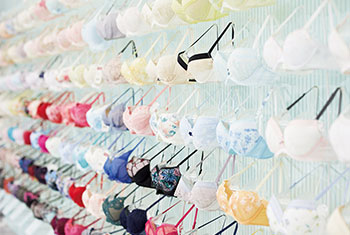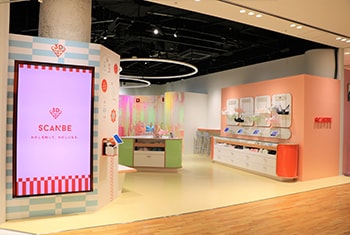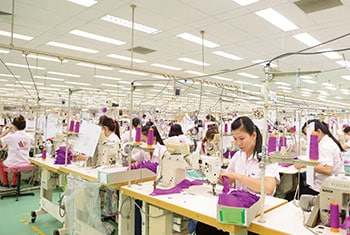Safety and Quality initiatives in manufacturing
Process before entering production
To ensure the quality of our Brassiere remains high, for each product we conduct in excess of 150 tests and checks prior to starting up full-scale manufacturing. Between the planning stage and the starting up of production for a product, we examine and assess the functionality of materials through wearing tests, experiments, durability tests, and prototypes. During this period, we test and check member parts, semi-manufactured products, and finished products based on their particular function. Stringent multifaceted testing and checking that takes into account the quality customers seek in relation to safety, durability, ease of use, wearability, and appearance, heightens overall product quality.
Manufacturing Process
Manufacturing brassieres involves a variety of processes, from procuring raw materials through to stretching, cutting, sewing, inspecting, and shipping. Each process includes various quality inspections. Wacoal only offers customers finished products that have passed all of these inspections as well as the final inspection.
Sewing Specifications and Standards
Sewing is done by hand because it requires the assembly of more than 40 small parts of various shapes. Each brassiere goes through roughly 20 processes, which takes a single team of 20 personnel about 25 minutes to complete. Each process calls for meticulous attention to detail. Only technicians with consummate skill are able to sew together parts into an attractive shape without diverging one single millimeter.
A particularly challenging process is creating the roundness of a brassiere. If the number of stitches in a seam is out by even one stitch, the brassiere will be uncomfortable to wear because it will not follow the body's contours. Therefore, Wacoal uses "sewing specifications and standards" written on a single sheet of paper as a manual for sewing processes. This stipulates the key sewing requirements in great detail, covering such aspects as thread, needles, seam allowance, overlap thread widths, and stitch size. In addition to sewing specifications and standards that cover every aspect of operations in minute detail, highly skilled technicians who have developed their sewing techniques to the level of craftsmanship use subtle adjustments in pressure in order to sew in conformity with requirements.
The Problem of Needles that Break During the Sewing Process
In rare cases, needles break when technicians do fine sewing work, especially when they sew together different fabrics or when needles come into contact with metal components. When a needle breaks during sewing, all surrounding operations are halted, and personnel carefully search for needle fragments. To ensure that personnel have not overlooked a single millimeter of needle fragment, we use a broken needle restoration tool. This device enables us to assemble the fragments together and completely restore the needle to its original form. Further, to prevent such needle fragments from scattering, we have installed sewing machines with plastic "broken needle anti-scattering covers." Moreover, as the final stage of our thoroughgoing quality control, before shipping products we inspect them using a conveyor type needle detector.
A Final Inspection
For brassieres, Wacoal's final inspection of finished products includes 25 different checks. Our inspection personnel exhaustively check such points as whether there are too many stitches and whether the sewing conforms with regulations. Only products that pass these strict inspections are recognized as Wacoal products.
Horizontal Expansion
We are disseminating the advanced production technology and expertise developed in Japan to our overseas manufacturing factories. "Made by Wacoal" approach seeks manufacturing that adds value by achieving unmatched quality. Wacoal seeks manufacturing based on exacting quality criteria because it desires to create products that satisfy women the world over.



